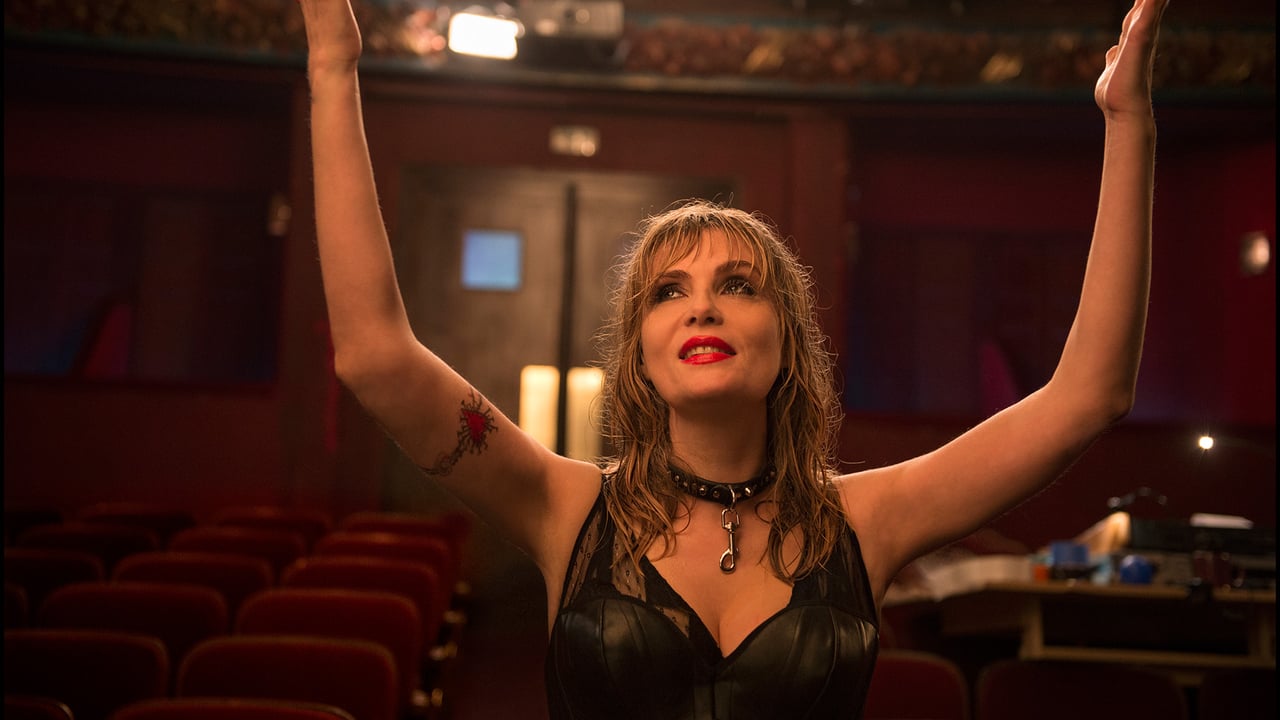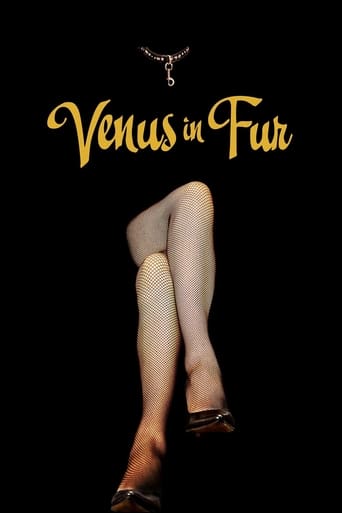

Venus in Fur is the new film from famed French director Roman Polanski. The film tells the story of Thomas, (played by Mathieu Almalric) a playwright who has decided to try directing because as he says, "other directors always get it wrong." He choose to adapt the novel Venus in Fur, written by Leopold Von Sacher-Masoch, (the founder of machoism) but is struggling with finding an actress to play Vanda, the lead female character. Just as he's about to leave, one final actress, whose name happens to be Vanda, (played by Emmanuelle Seigner) shows up to audition for the part. Very quickly Thomas decides that Vanda is perfect for the role, and they start to go through the play acting scenes out, discussing the play, discovering things about each other and the lines between reality and fiction begin to blur. Venus in Fur is adapted from a play, which makes it Polanski's second play-to-film adaptation in a row. (The previous being Carnage.) If you told me I was going to be watching a Polanski film about machoism, this is not what I'd expect. I mean this is the guy who brought us Repulsion and Rosemary's Baby. But instead of being a dark twisted psychological horror film, Venus in Fur is instead a subtle subdued film that studies the relationship between author and subject matter, and how art imitates life and life imitates art. A concept that was, unfortunately for Venus in Fur, explored much better in Alejandro González Iñárritu's Birdman a film released only a year after Venus in Fur. That's not stay that Venus in Fur does a bad job, the film raises several interesting questions about how much of themselves authors put in their work, and how the audience interprets that work.If you somehow knew that the two leads in Venus in Fur also play the two leads in The Diving Bell and the Butterfly just by reading their names and recognizing that they were both in it, then good job because that is some serious name recognition skill. Both actors, like in The Diving Bell and the Butterfly, do great work in Venus in Fur. The characters conflict with each other perfectly, I don't mean that they completely disagree on everything, I mean that they disagree on a certain number of things and they agree on a certain number of things for their characters to have great chemistry. The entire film relies on these two characters being good and the actors being good, and luckily both of these things are true. Venus in Fur is at heart a teleplay and while it's no 12 Angry Men, it's still pretty good. Venus in Fur can be a little dull and tedious at parts, but never for to long, and the ending is far from satisfying. Besides these two things, I don't really have any other issues with the film.Venus in Fur is not the best Polanski film, and if you haven't ever seen another Polanski film before in your life I would recommend checking out Repulsion, Rosemary's Baby, or Chinatown before watching Venus in Fur. I'd like to end by saying that the film feels like one that you would put on a rainy Sunday afternoon, a very calm slow film that lets you soak in the atmosphere and style while never forcing any dark heavy stuff at you, Very comfy.6.8/10
... View MoreBased on a play by David Ives and set in a seedy theater, VENUS IN FUR is a two-hander wherein a director (Mathieu Amalric) auditions a two-bit actor (Emmanuelle Seigner) for a role in his stage adaptation of VENUS IN FURS, an 1870 novel by the Austrian author Leopold von Sacher-Masoch. From this work the term "masochism" became commonplace.Director Roman Polanski's use of a single set allows him to focus closely on the relationship between the protagonists. As the film begins, it seems that the director enjoys a hold over the actor; he not only has the power to dictate whether she is suitable for the role or not, but claims the privilege of masculinity as being stereotypically the "strongest" sex.As the action unfolds, however, so the roles begin to change. This is achieved through a clever manipulation of dialogue between the characters. Sometimes they appear to be reading the adaptation out loud; on other occasions they simply talk to one another. Initially it seems as if Polanski is keen to separate the two (distinguishing "fiction" from "reality," so to speak), but as the film advances we find it more and more difficult to distinguish between them. Likewise the concept of role-playing becomes difficult to work out, as the two characters exchange roles - the director taking the female lead, the actress playing the male in the adaptation. This move gives both of them the chance to explore the concepts of "masculinity" and "femininity" and how they are socially constructed and/or (de-)constructed.In an ending of almost Gothic proportions, the actress emerges triumphant while the director ends up being discomfited, proving beyond doubt how gender roles can be readily challenged, or even subverted.While Polanski's concerns are undoubtedly significant, our appreciation of them is tempered somewhat by the nagging sense that, as a male director, he is reinforcing rather than challenging gender concerns. This is especially evident in the way his camera lovingly pans over Seigner's semi-naked body - her legs, arms and full breasts. She ends up being objectified even while trying to challenge the director's patriarchal authority.Nonetheless VENUS IN FUR remains compelling, as well as intense viewing - a testament to what can be achieved on a limited budget and a simple setting.
... View MoreWith his last two films, ""Carnage" and now, "Venus in Fur", Roman Polanski proves that he is a master of the intimate, the theatrical and a terrific director of actors. Of course, on both occasions he's had really good source material from which to work; both plays won the Tony. "Venus in Fur", of which we are concerned here, is a two-character piece based on the play by David Ives, who co-wrote the script with Polanski. It's set in a deserted theatre where Thomas. (Polanski lookalike Matheiu Amalric), is trying to find an actress to play the heroine in his adaptation of Leopold von Sacher-Masoch's novel "Venus in Fur". He's had a fruitless day when in walks Vanda who just happens to know his play inside out and has the same name as the character she aims to play.What follows is a case of art imitating life as director and star move effortlessly into their roles with devastating and devastatingly funny results. Here we have a film about a sado-masochistic relationship as well as a film about putting on a play, though fundamentally this is a film about role-play and the art of acting and both Amalric and especially Emmanuelle Seigner as Vanda are superb and not in the least in a theatrical way; they play not to an audience but to the camera and I luxuriated in their company. Here, too, is a movie that is sharp, smart and very funny and one which will rank with the very best of this director's work.
... View MoreAfter "Carnage" another play from Roman Polanski. He seems to have found a muse in filmmaking (adapting) them. He literally found one in E. Seigner who plays the lead here. Some would call her a Femme Fatale. Even if you don't know the book this is adapted from (Venus in Fur) like myself you will get a feel for the piece.Put two great actors in a room (a big room) and let them do their thing. Now don't get me wrong, this movie can be very annoying, especially if you start thinking about patterns or character behavior that might not be your reaction to things happening. You can argue who is evil in this though. Or more accurate more evil than the other person. Or maybe you're looking for the good in the characters (of course bad traits are easier to find).Mesmerizing and an ending that is very theatrical. Not everyones cup of tea, but professionally made nonetheless
... View More